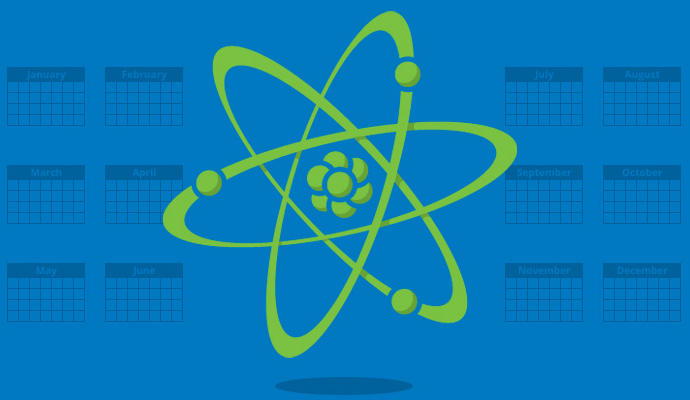How radioactive are you?
There are naturally occurring sources of radiation all around us. Use this tool to calculate your yearly exposure from some common sources. You may be surprised by the results.


There are naturally occurring sources of radiation all around us. Use this tool to calculate your yearly exposure from some common sources. You may be surprised by the results.

There is radiation all around us. Depending on where you live in the world, you will be exposed to different doses of natural radiation. Things like latitude and altitude can affect how much radiation you're exposed to.
Here you can calculate an average additional dose for your elevation. Latitude also affects radiation dose – people living at the equator will receive a greater dose than those living closer to the poles.
Select the elevation you live closest to, then click Next.
Some buildings contain natural radioactive substances. Bricks, mortar, concrete and tiles all contain small amounts of naturally occurring uranium and thorium. But the amount of radiation is so low it has no affect on your health.
In this case, you will be exposed to naturally radioactive potassium from the other person’s body. And yes, the other person is exposed to your naturally radioactive potassium too. Sharing is caring.
The longer you’re in the sky, the more radiation is absorbed by your body. This is because you are closer to the cosmic radiation that comes from outer space. Basically, the higher you fly, the less shielding you’re provided by the atmosphere. However, even if you were on a plane for 365 days straight, you might suffer from cabin fever but you wouldn’t get radiation illness.
While the exact dose depends on the cruising altitude and specific flight path, you can calculate an average dose based on the total number of hours you spend in the sky.
Drop food types onto the plate if they’re a popular addition to your meals. Even some of the foods we eat contain naturally occurring radiation. Food like carrots, pumpkin, spinach or yoghurt are all items on the radiation menu. But there is no need to avoid them, as you would need to eat 10 million bananas every year or a few tonnes of Brazil nuts before you got even a mild radiation illness.
On average, people ingest 0.2-1mSv of radiation via the food they eat each year.
You currently have no items on your plate
Clay-based cat litters contain naturally occurring radioactive materials (NORMs), like uranium and thorium, that make them slightly radioactive.
Do you fertilise the garden? Some garden fertilisers contain potassium sulphate, which is slightly radioactive. However, you would suffer more from its smell than anything else.
X-rays and some medical procedures using radioisotopes contain small doses of radiation; the actual dose depends on which part of the body is being examined and the type of procedure.
Here you can calculate average doses for nuclear scans, xrays and CT scans. Although the exact doses received will depend on the specific type of nuclear medicine used and the body region being investigated.
Do you have one of those big old TVs that looks like a box? They’re called Cathode Ray Tube (CRT) TVs and monitors, and they emit a very small amount of radiation.
Below shows an estimate of the average amount of radiation you would be exposed to on a yearly basis alongside what is typically considered a harmful amount of radiation.

Your calculated yearly total came to:

Extra yearly average dose for a radiation worker:

Extra yearly average dose for domestic flight crew:

Extra yearly average dose for international flight crew:

Extra yearly average dose for a farmer (who spreads fertiliser):

Yearly dose linked to an increased cancer risk:

Single dose causing radiation illness:
We’ve calculating your yearly radiation exposure based on the questions you answered above as well as constant radiation sources that affect all humans, like cosmic radiation from outer space! Find out more about each source below:

Living at altitude

Living in a brick house

Sleeping next to someone
Plane travel
Foods

Cat litter

Exposure to fertiliser
Medical procedures

CRT monitors
There’s a lot of misinformation and misunderstanding about what radiation actually is. But the fact is, we’re surrounded by it and depend upon it to survive.
Hopefully you’ve discovered how often you come into contact with radiation in your everyday activities and how little it affects you.